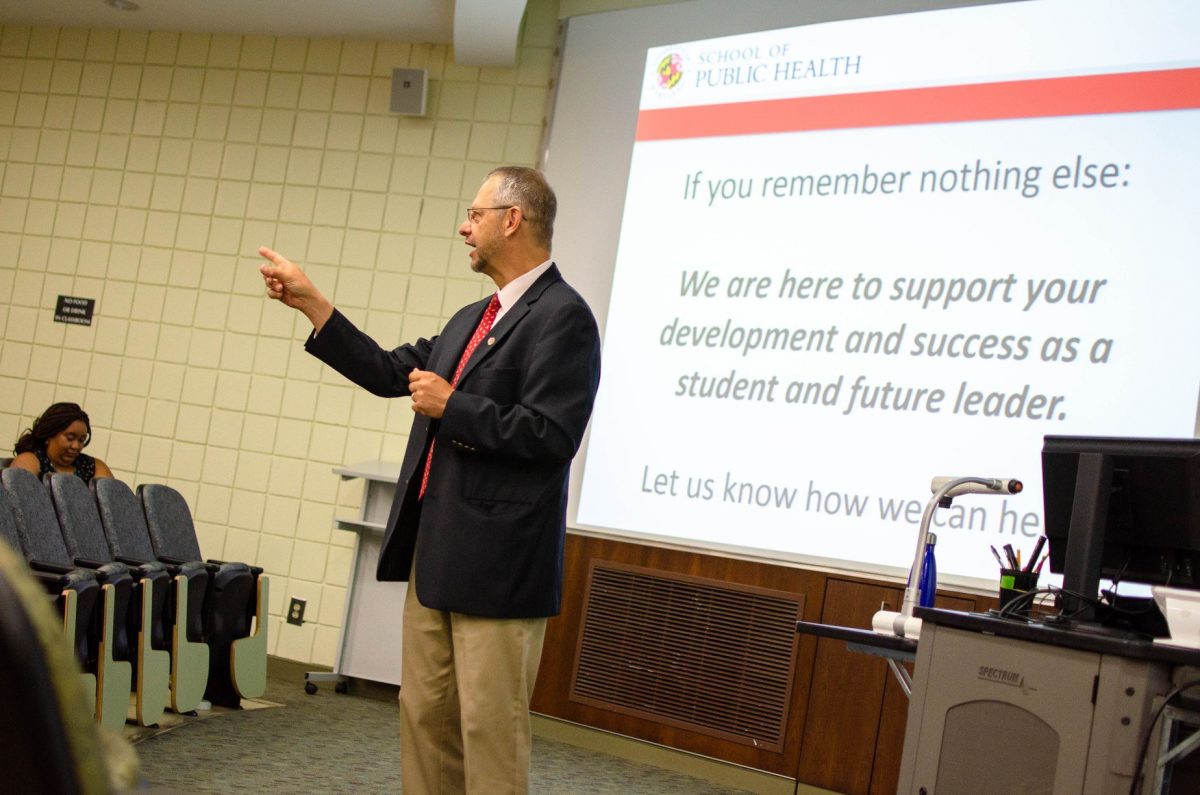
Boris Lushniak, the Dean of the School of Public Health at the University of Maryland, has decades of experience. He served as the U.S. Deputy Surgeon General for five years, worked at the Office of Counterterrorism, and was the commander of a United States Public Health Service medical unit in Liberia, which housed the only U.S. government hospital providing care to Ebola patients.
He’s been on the front lines for more than 20 years, but he’s never seen anything like the coronavirus pandemic.
“No one’s really experienced this,” Lushniak says of COVID-19, of which there are currently 85 confirmed cases in Maryland. “It’s an invisible threat—you don’t see the virus, and that brings in excess fear. This is uncharted terrain.”
The Maryland Department of Health has provided guidelines for what people should do if they think they might need to get tested, asking for patience with regard to the amount of tests available. The department is imploring those who are experiencing symptoms to discuss testing with a health care provider, as only a health care provider can order COVID-19 testing, collect samples, and send them to a lab to finish the process.
The test, which includes a swab of the nose or throat, is carried out at the discretion of these providers, who can also offer information as to how long it will take to get results. The state of Maryland is also working to create drive-through testing sites, specifically at the state’s Vehicle Emissions Inspection centers.
Overall, Lushniak says that it’s important to strike a balance between real concern and becoming overwhelmed by the influx of information that surrounds the conversation: “The whole issue of panic and worry doesn’t have a place right now,” he says.
To get a clearer sense of the virus, we spoke with Lushniak about the measures taken to combat it, what you can do to flatten the curve, and what to expect in the coming days, weeks, and months ahead.
In your opinion, what are the key facts that people should know about the virus?
We know that in the majority of people who have been infected with this virus, the symptoms have been mild. What we don’t know in the United States is the amount of people infected who are totally asymptomatic. Because we don’t have a vaccine, everyone needs to take seriously that we’re in a new phase of fighting this virus that depends on medical science.
What should people do if they’re feeling sick?
Stay away from others. Don’t go into work. Don’t go into school. Hands are key components of the transmission of this virus. Make sure you’re taking good care of your hands and washing them all the time. With coughing and sneezing, sneeze into a sleeve or a tissue, throw the tissue away, and then wash your hands. Don’t touch your face. This virus doesn’t get in through the skin. It doesn’t get in through any other orifices of the body other than the mouth or nose. You have to make sure that the area around you is clean. And what’s most important is the whole new concept of social distancing—standing six feet away if possible. We want to fight this and do it together.
How is what we’re experiencing now different from outbreaks in the past?
We have to see whether our efforts are going to work using all of the 21st-century skills and tools we have. There’s a major difference between where we are today and the Spanish flu in 1918 and 1919. A hundred years ago, no one could see that virus under a microscope. Now, within a few weeks, we have the full RNA genome of this virus. That’s 100 years of progress. That’s what makes this time unique from an optimistic viewpoint. We’ve never been here before with this type of science.
What do you anticipate the timeline for fighting this virus will look like?
Well, because we’ve been lagging behind in diagnostic testing, we’ve been using the wrong terminology in saying, “Here’s the number of cases per day.” Those are only the reported cases. We need to specify because we’ve not been really good on the diagnostic testing front. Because we’re going to have allegedly many more tests being available, and they are going to be used much more widely, in the next 10-plus days, we’re going to see almost an alarming surge of people with positive tests.
In the near future, we’re going to be placing more of an emphasis on the only weapon we have in hand, which is flattening the curve. The last thing we want is for these people to get really sick, which then breaks down the medical care system. This is real, but we can battle this. We just have to do it in innovative ways.
I always tell my students we have to be optimistic. Pessimists are washed out early in a public health career. We have to be optimists that science, technology, and know-how will get us to an endpoint. That endpoint is not the next few weeks, or even the next few months.
In times like these, are there things that bring you hope?
You know, last night—both my daughters are home, and we had a nice dinner. Both of them are interested in a career in medicine and are pre-med majors in school. I turned to them at dinner and explained that you have to look at this from several perspectives. This is a unique event that no one on this planet has ever experienced. It’s been 100 years since the Spanish flu, and the beauty of this is we really will test our mettle as a society and as scientists and people in the medical profession. The optimism is there. We will persevere, we will learn things from this, and we will be better the next time this happens. That’s my hope.